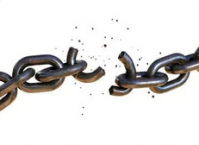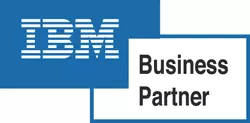September 2006
What is "System Erosion?"

- Moving from "Application Erosion" to "System Erosion"
- A Broader View – "System" means "People, Process & Technology – Together"
- Processes and Activities – Our philosophy on these
- When systems should be at their best...
- When systems start to erode...
- A spider web may be a better analogy...
This is the first of a two-part article on System Erosion.
Moving from "Application Erosion" to "System Erosion"
I was recently meeting with a colleague, and the topic turned to something that really got my attention – the various factors that cause business systems to become outdated, even in as few as 5 or so years. He had seen signs of this problem in his clients, but had not known what it was called, why it occurred, or how to address it. I described this phenomenon using a term that I had once heard – "application erosion." My friend agreed that this was a good term to summarize the concepts, because "erosion" gave him a clear, concise image of the concept.
I later realized that "application" doesn't take into account all the elements we see in serving our clients. "Application" is a subset of what we call "system."
So, allow me to introduce a new term, "system erosion" – a broader, more accurate, and more descriptive term to describe a complex phenomenon. My goal in this article is to explain "system erosion" – to define and illustrate this term, to identify underlying causes, and to suggest some techniques to address it.
A Broader View – "System" means "People, Process & Technology – Together"
In our firm, we think of System in terms of People, Process, and Technology, together:
- People perform activities that are part of Process, and also use the Technology enabling the Process.
- Process is the glue that links People with Technology. The "goodness of fit" between people and technology is determined by the process design. A good design makes process comfortable for people. A poor design irritates people. For example, carrying out complex processes via e-mail and word processing documents is a poor design – the design is poor because the technology cannot provide the collaboration and coordination needed to effectively carry out a complex process.
- Technology includes the hardware and software (computer programs) that work together to gather, process, and store information.
This broader view of System comes from applying "systems thinking" concepts (to read further on these concepts, I recommend Peter Senge's book, The Fifth Discipline: The Art & Practice of the Learning Organization). A few key principles:
- A "system" is any set of interdependent or interacting parts.
- Insights into the system as a whole are gained by understanding the linkages and interactions among the underlying parts.
- These linkages and interactions may be hard to see, because the initial cause and ultimate effects are always separated by time and frequently separated by distance.
- Because of these linkages and interactions, even small causes can propagate or accumulate to become large effects throughout the whole system.
As we shall see, system erosion is precisely the result of small events that have accumulated and propagated over time.
Processes and Activities – Our philosophy on these
Processes consists of one or more activities that produce results and consume resources – therefore, it is important to understand this chain of fundamental relationships:
- Processes consist of one or more steps called activities.
- Activities have a dual nature:
- Activities Consume Resources – Resources include people, technology, and physical assets.
- The issue here is efficiency – achieving cost goals. So, ask yourself – "Are our activities being done well? Are they being done for a reasonable cost?" For example, a large number of reworks during the sales quoting process unnecessarily consumes time and processing capacity.
- The touchstone of consumption and efficiency is clear measurement of activity cost.
- Activities Produce Results – Results include items such as a processed order or a shipped order.
- The issue here is effectiveness – achieving the intended results. Again, ask yourself – "Are our activities directed toward the right things? Are we doing enough of the right activities?" Continuing our example, if your sales quotes do not yield enough new business – that is, not enough ROI – then is your sales quoting process effective?
- The touchstone of accomplishment and effectiveness is clear linkage of actual results to strategic goals.
- Activities Consume Resources – Resources include people, technology, and physical assets.
- Results – and, hence the processes and activities that produce them – can be measured on the basis of:
- Cost – that is, the costs associated with the activities that produce the results.
- Cycle Time – that is, the start-to-finish time for completing an activity.
- Quality – that is, how closely the actual result conforms to the expected result.
These concepts can be pictured as shown in Exhibit 1.

When systems should be at their best...
As the People, Process, and Technology – Together (PPT-T) diagram in Exhibit 2 suggests – and our experience corroborates – the more highly PPT-T are aligned with each other and with strategic business goals, the easier it is to produce stronger results, and to increase ROI of the system and the business.

Software vendors typically present an ROI to justify why prospects should purchase their software. The vendors quantify benefits in terms of efficiency and other gains, that will result from purchasing and using their software. The issue – these gains can only be realized by effectively aligning people and process with the technology. The vendor is holding out a potential value based on the total system – that is, PPT-T – but may downplay the importance of people and process in receiving the full business value. We have seen many software implementations flounder and fail to deliver expected value because the vendor did not guide the company in aligning all parts of the overall system.
When is alignment typically "best" or "as good as it will ever get"? This should be at or shortly after a major system implementation, or a business process reengineering project – assuming, of course, that the efforts have been done well. Why is this? Several reasons exist:
- People, Process, and Technology have been deliberately planned– This should be the time when processes and activities have been consciously and deliberately:
- Reviewed and documented.
- Quantified, in terms of cost, cycle time, and quality.
- Rationalized, meaning that decisions have been made to balance resources applied against resources needed, prune non-value-added activities, and reinforce value-added activities.
- Process is emphasized and personality is downplayed – The most successful projects permanently change the culture of the company to emphasize process and downplay personality. This shift in focus from people to process is less threatening and promotes objective discussions, allowing people to more freely and creatively suggest improvements to the overall system.
- The "Hawthorne Effect" comes into play – Just the act of studying something makes it better, as researchers conducting experiments at the Hawthorne Works factory of Western Electric discovered in 1927.
- Knowledge is regained – Consciously studying something allows lost knowledge to be regained – or first time awareness gained – on how everything fits together. While technology has a permanent memory, people do not and peoples' memory of how they execute process and interact with technology diminishes.
Thus, the PPT-T linkages should be best at or shortly after some sort of major system project.
When systems start to erode...
"Erosion" is a wonderful term to describe what is happening, because it implies gradual – almost imperceptible – loss of value, over time. "Erosion" also implies a certain naturalness to the process – and that is true, because the underlying causes are a function of time, and their effect on the linkages and interactions of the overall system.
In nature, erosion occurs when forces such as wind and water break down rocks into the underlying minerals or particles comprising them – that is, the physical bonds holding the particles together have been broken. Similarly, system erosion occurs when the effects of time and distance break down the linkages and interactions that hold together the PPT.
A spider web may be a better analogy...
In nature, erosion is not typically reversible, at least in the short-run. Another example from nature – a spider web – may provide a better analogy.
The spider web is highly intricate, beginning with silk anchored on twigs and then fully built out using different types of silks. Similarly, a flowchart of even a moderately complex system is reminiscent of a spider web – it takes a lot of discipline to define, document, establish, and implement the linkages and interactions among PPT-T.
To function properly, the spider web must be light enough to allow wind to pass through, yet still be strong to capture an insect and to provide a footing for the spider to claim its meal. Likewise, PPT-T must be nimble enough to effectively handle a variety of situations and changing business conditions, yet still be sufficiently robust to consistently and efficiently handle large or complex business activities.
Finally, a spider web can withstand a few broken strands, but at some point, it begins to lose its integrity as more and more strands are broken – at that point, the spider will repair the strands. In like manner, when PPT-T linkages and interactions begin to lose their integrity, they can be repaired.
Next month, Part 2 will conclude with symptoms and causes of system erosion, interventions that can be applied, and results and benefits to be experienced from addressing the problem of system erosion.
Sincerely,

Todd L. Herman






